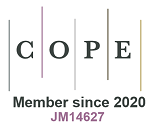An Analysis of the Transformation of Mega-Pharma’s Business Model toward the Emerging Market
Abstract
Keywords
References
Differding, Edmond. “The Drug Discovery and Development Industry in India-Two Decades of Proprietary Small-Molecule R&D.” ChemMedChem 12, no. 11 (June 1, 2017): 786–818. doi:10.1002/cmdc.201700043.
Nair, G. Gapakumar, et al. “Landmark Pharma Patent Jurisprudence in India,” Journal of Intellectual Property Rights, Vol. 19, March (2014): 79-88.
Singh, M. Prathiba. “Breaking the Anti-IP Myth,” Managing Intellectual Property, (September 2014).
Horner, Rory. "The impact of patents on innovation, technology transfer and health: A pre-and post-TRIPs analysis of India's pharmaceutical industry." New Political Economy 19, no. 3 (2014): 384-406. doi:10.1080/13563467.2013.796446.
Dhar, Biswajit, and Reji K. Joseph. “The Challenges, Opportunities and Performance of the Indian Pharmaceutical Industry Post-TRIPS.” ARCIALA Series on Intellectual Assets and Law in Asia (September 2019): 299–323. doi:10.1007/978-981-13-8102-7_13.
The Japan External Trade Organization (JETRO), Japan. Available online: https://www.jetro.go.jp/en/ (accesses on 24 May 2020).
United Nations, Available online: https://www.un.org/en/ (accesses on 24 May 2020).
OECD Economic Outlook Projection, 2020, Available online: http://www.oecd.org/economic-outlook/june-2020/ (accesses on 24 May 2020).
Bhojwani, H. R. "Developing innovative capacity in India to meet health needs." Innovation In Developing Countries To Meet Health Needs (2005): 112.
The Patent Act, India, 1970. Available online: http://www.ipindia.nic.in/writereaddata/Portal/IPOAct/1_31_1_patent-act-1970-11march2015.pdf (accesses on 24 May 2020).
Minato, Kazuki. “Background of Indian Pharmaceutical Industry and changes after TRIPS Agreement,” In Generic Medicine Market in Japan and Pharmaceutical Industry in India and China, edited by edited by Kubo, Kensuke, Japan, IDE-JETRO (2007): 21-54.
Yaeko Mitsumori, “Study on the roles of the Section 3d of Indian Patent Act for lightening negative impact of product patent introduction in 2005 on Indian pharmaceutical industry,” Technology and Economy, No. 526, Japan MOT Society, (December 2010): 50-57.
IBEF Ppharmaceuticals May 2019, IBEF (2019). Available online: https://www.ibef.org/industry/indian-pharmaceuticals-industry-analysis-presentation (accesses on 11 July 2020).
Seyedimany, Arian. “Stock Price Reactions on NASDAQ Stock Exchange for Special Dividend Announcements.” Emerging Science Journal 3, no. 6 (December 1, 2019): 382–388. doi:10.28991/esj-2019-01200.
The Global Use of Medicine in 2019 and Outlook to 2023 Institute Report, IQVIA, 2019. Available online: https://www.iqvia.com/-/media/iqvia/pdfs/institute-reports/the-global-use-of-medicine-in-2019-and-outlook-to-2023.pdf. (accesses on 29 January 2019).
History of Indian Patent System, IPO, India, 2020. Available online: http://www.ipindia.nic.in/history-of-indian-patent-system.htm. (accesses on 18 April 2020).
The Indian Patents and Designs Act, India, 1911. Available online: http://theindianlawyer.in/statutesnbareacts/acts/d42.html. (accesses on 23 April 2020).
MITSUMORI, Yaeko, and Akio NAGAHIRA. “Qualitative & Quantitative Analyses of Impact of a Safeguard Section of Indian Patent Law 2005.” International Journal of Japan Association for Management Systems 8, no. 1 (2016): 39–46. doi:10.14790/ijams.8.39.
WTO. TRIPS, “Which countries are using the general transition periods? Frequently asked questions about TRIPS (trade-related aspects of intellectual property rights) in the WTO, 2020. doi:10.4337/9781781006047.00016. Available online: https://www.wto.org/english/tratop_e/trips_e/tripfq_e.htm#Transition. (accesses on 11 April 2020).
Patent (Amended) Act, 2005 The Patents (Amendment) Act, India, 2005. Available online: http://ipindia.nic.in/writereaddata/ Portal/IPOAct/1_69_1_patent_2005.pdf. (accesses on 23 May 2020).
The Indian Patent Office (IPO), India, 2020. Available online: http://www.ipindia.nic.in/ (accesses on 23 April 2020).
India. Annual Report 2016-2017 Intellectual Property India, The Office Of The Controller General Of Patents, Designs, Trade Marks And Geographical Indications India, 2016. Available online: http://www.ipindia.nic.in/writereaddata/Portal /IPOAnnualReport/1_94_1_1_79_1_Annual_Report-2016-17_English.pdf. (accesses on 29 March 2020).
IPO Annual Reports 2002/2003 - 2016/2017. India. Available online: https://www.sebi.gov.in/sebiweb/home/HomeAction. do?doListing=yes&sid=4&ssid=24&smid=0 (accesses on 05 April 2020).
Nikkei Business Publication, Nikkei Bio Yearbook 2019, 2018. Available online: http://www.nikkeibp.com/adinfo/whatsnew/ (accesses on 05 April 2020).
Mitsumori, Yaeko. “India’s First Compulsory License: Its Impact on the Indian Pharmaceutical Market as well as the World Market,” In Proceedings of PICMET 2014, July 27-30, Ishikawa Japan, (2014): 1437-1443.
Patents (Amendment) Act, 1999. India. Available online: http://www.ipindia.nic.in/writereaddata/Portal/IPOAct/1_34_1_ patents-amendment-act-1999.PDF.(accesses on 25 March 2020).
IQVIA Patent Analysis– Brazil / India / Philippines by GMI Analyst Services (2017).
India. In the High Court of Judicature at Madras Dated: 06.08.2007 Coramthee Hon’ble Mr. Justice R. Balasubramanian and The Hon’ble Mrs. Justice Prabha Sridevan W.P. Nos. 247559 and 24760 of 2006.
Intellectual Property Appellate Board M.P. Nos 1 to 5/2007 in TA/1 to 5/2007/PT/CH and M.P.No.33/2008 IN TA/1/2007/PT/CH Friday This the 26th Day of June 2009, Indi, 2009.
In the Supreme Court of India Civil Appellate Jurisdiction CIVIL Appeal Ns. 2706-2716 of 2013, India.
Application for Compulsory License under Section 84(1) of the Patents Act, 1970 in Respect of Patent No. 215758, India, 1970.
MSF, India: Supreme Court delivers historic verdict in Novartis case India, April 2013. Available online: https://www.msf.org/indian-supreme-court-delivers-verdict-novartis-case. (accesses on 11 March 2020).
Harris, Gardiner and Thomas, Katie. “Low cost drugs in Poor Nations Get a Lift in Indian Court,” NYT April 2, 2013.
Fujii, Mitsuo, head of IPR division of Japan Pharmaceutical Manufacturing Association (JPMA), Interviewed by Yaeko Mitsumori, December 2018.
DOI: 10.28991/esj-2020-01228
Refbacks
- There are currently no refbacks.
Copyright (c) 2020 Yaeko Mitsumori






